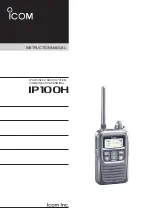
43
b) Mains Adapters
• The mains adapters are constructed pursuant to protection category II.
• Only connect the mains adapters to proper mains sockets of the public mains.
• The mains sockets for both plug-in mains adapters must be clear the monitor/DVR or radio
camera and easily accessible.
• The plug-in mains adapters are only designed for use in dry, enclosed inner rooms; they must
not become damp or wet. There is danger to life from electric shock!
• Do not pull the plug-in mains adapter from the mains socket by pulling the cable.
• Protect the cables of the plug-in mains adapters from sharp edges, do not stop on them.
• If a mains adapter is damaged, do not touch it. Danger to life from electric shock!
First deactivate all sides of the mains socket to which the plug-in mains adapter is connected
(e.g. switch off the respective fuse or turn out the fuse. Then deactivate the associated FI pro-
tection switch).
Only then pull the plug-in mains adapter from the mains socket and take the product to a spe-
cialist workshop.
• Only use the enclosed plug-in mains adapters for operation of the screen/DVR and radio ca
-
mera. In case of defects of a plug-in mains adapter, replace it with a stabilised plug-in mains
adapter of the same build with the same technical data (voltage/current).
c) Screen/DVR
• The screen/DVR is only suitable for dry, closed rooms. Do not expose it to direct sunlight, heat,
cold, dampness or wetness; otherwise, it will be damaged.
• Never cover the ventilation slots on the back.
• Mount the screen/DVR on stable surfaces only.
• Do not push the display surface too hard. This will not only leave scratches, but the display may
also break and be permanently damaged. Loss of guarantee/warranty.
d) Radio Camera
• The camera is suitable for indoor and outdoor use (IP65). However, it must never be operated
in or under water; it would be destroyed by this.
• The connection plug at the camera‘s power supply cable is not water-proof or water-tight and
therefore must be in the dry indoor area (e.g. of a suitable connection box).
• The radio camera must not be exposed to extreme temperatures, intense vibration or heavy
mechanical strain.
• Ensure that the connection cable is not crushed, bent or damaged by sharp edges.
• The operation of this radio camera is no substitute for your responsibility to supervise children
or other people in need of special care. It only serves as a support.
• Install the radio camera so that it does not point right at bright light sources (e.g. the sun or
spotlights). This will not only cause an overmodulated and useless image, but also may damage
the image sensor it permanently exposed.
















































